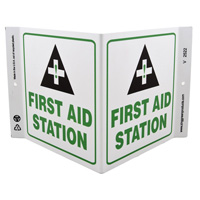| The Home page of ILPI's Safety Data Sheet (SDS) Resource, the leader in SDS information since 1995! | |
| The history and philosophy behind this resource. | |
| A curated collection of books and reference materials concerning Safety Data Sheets and closely related topics. | |
| Paste your plain text SDS into the SDS-Demystifier, and it will be converted into a hypertext-enriched document with links to detailed explanations of each key term. | |
| An extensive list of frequently asked questions about Safety Data Sheets including regulations, content, compliance, and more. | |
| A humorous take on Safety Data Sheet jargon. Fill in the blanks on our entry form to generate a personalized Unsafety Data Sheet to share with your coworkers. | |
| Since 1995, we've maintained this massive curated list of the best places to find Safety Data Sheets on the Internet. | |
| You are here! Way more than a glossary, this hypertext-enhanced resource covers hundreds of SDS-related terms and expert knowledge. Each entry includes both the SDS relevance and links to additional authoritative resources. | |
| Archived results of Safety Data Sheet related polls taken by some of our millions of site visitors | |
| The OSHA regulations behind SDS regulations, including the inspection guidelines and over 400 official interpretations letters under the Hazard Communication Standard | |
| Commercial suppliers of SDS authoring and management software as well as cloud compliance services. | |
| Commercial companies that will create SDS's for your specific needs as well as SDS translation companies. |

Safety signs, banners, and scoreboards? Get yours at Safety Emporium!
Definition
Asymptomatic means neither causing nor exhibiting symptoms of disease.
Symptomatic means a physical indication (rash, pain, discomfort etc.) of disease or disorder. For example, red spots are symptomatic of measles and chest pain is symptomatic of a heart attack (myocardial infarction).
 Do not confuse "symptomatic" with the term systemic, which means spread throughout the body.
Do not confuse "symptomatic" with the term systemic, which means spread throughout the body.
Additional Info

Ensure safe laboratories with laboratory signs and labels from Safety Emporium.
Many diseases or conditions do not display any symptoms and are therefore asymptomatic. For example, a cerebral aneurysm may not show any symptoms until it ruptures, at which point the symptoms become immediately evident. Most small cancers are asymptomatic until they reach an appreciable size.
In terms of occupational exposures, a chemical can have delayed effects on the body, so your exposure may initially be asymptomatic. One example is inhalation of asbestos fibers - the symptoms of the lung damage may not show up for years. Another example is skin exposure to hydrofluoric acid, which usually causes no initial pain, but over hours or days can reveal itself through excruciating pain, physical damage and/or death.
Just because one does not display symptoms of a disease or chemical exposure does not necessarily mean that one does not have the disease or was not exposed. Certain symptoms might occur only 50% of the time...or not at all depending on the individual involved.
In general, being asymptomatic is a good thing, but it is not a guarantee of health. Be alert for unusual changes in your health at all times, but particularly whenever you work with hazardous materials.
SDS Relevance

We have all kinds of safety wall signs at Safety Emporium.
"Asymptomatic" usually appears on a Safety Data Sheet in the context of an exposure to the material not causing any obvious symptoms even though it presents a health hazard. This is why it is always important to read and understand SDS's before working with workplace substances.
"Symptomatic" usually appears in Section 4 (first-aid measures) of an SDS in reference to the recommended treatment for exposure to the material. For example, the SDS may say to treat the effects by treating the symptoms it causes (e.g. "treat symptomatically"). That means while you can't treat the exposure directly, you can mitigate its effects by giving ibuprofen for pain, oxygen for breathing difficulty etc.
When reading and understanding SDS's, be sure to take in the Big Picture. Many different processes can cause the same set of symptoms. For example, chest pain is symptomatic of a heart attack, but it also indicates a bad case of heart burn. Just because you are showing symptoms of exposure to a material, do not immediately rule out other likely causes. If you have the slightest doubt about the cause of a symptom, consult your physician or hospital emergency room and, if practical, take any relevant SDS's with you.
Further Reading
- Symptomatic at the NIH's MedLine Plus Medical Encyclopedia.
- Symptomatic Treatment at Wikipedia.
- ATSDR has page titled Toxic Substances Portal - Unidentified Chemical which discusses symptoms (and absence thereof).
- Chronic Reactive Airway Disease following Acute Chlorine Gas Exposure in an Asymptomatic Atopic Patient from National Academies Press's Environmental Medicine: Integrating a Missing Element into Medical Education.
- Acute Exposure Guideline Levels (AEGLs) at NOAA's Office of Response and Restoration discusses exposures which may not be symptomatic.
See also: inhalation.